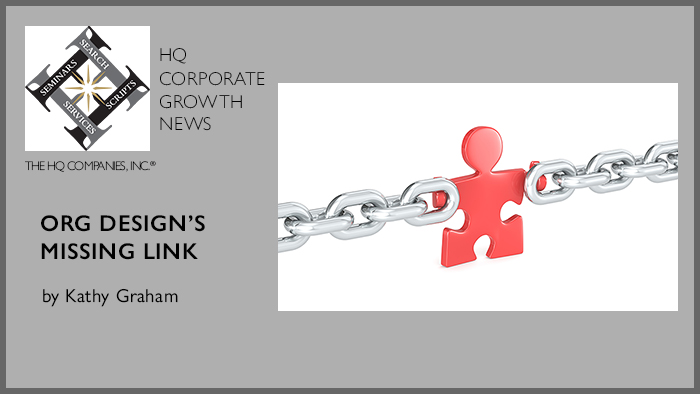“Organizational design is a step-by-step methodology which identifies dysfunctional aspects of work flow, procedures, structures and systems, realigns them to fit current business realities/goals and then develops plans to implement the new changes. The process focuses on improving both the technical and people side of the business.”1
Since the 1960s, Burns and Stalker’s contingency theory of organic/mechanistic structures is the framework behind most corporations and consulting firms’ organizational design. Early on, researchers operationalized the theory (despite the likelihood that Burns and Stalker intended their theory to be an abstract model) AND focused on the structural elements, giving far less attention to the employee experience.2
In other words, Burns and Stalker’s model was changed in practice, a not uncommon phenomena per Columbia University’s Professor/Director of Financial Engineering Emanuel Derman in his book Models. Behaving. Badly: Why Confusing Illusion with Reality Can Lead to Disasters, On Wall Street and in Life,3 who says: “Given the inevitable unreliability of models and the limited truth or likely falseness of the assumptions they’re based on, the best strategy is to use them sparingly and to make as few assumptions as possible.”
Derman’s suggestions when working with models—which are useful tools in understanding the inherently complex—include adjust the output of the model to reflect omissions and changes in assumptions.4 Since the employee experience was minimized in practice and an intended abstract was used as a reality, start your organizational design with confidential qualitative interviews with employees in the impact area that yield a statistically significant analysis of what’s really going on, who’s really doing what, etc.—what PwC calls the “informal elements of organizational design.”5
By starting with the reality of the employee experience, the companies that have hired me to conduct those confidential qualitative statistically significant interviews and follow-on human capital analysis/advice/organizational design have been able to identify what were the real obstructions to the implementation/acceptance of new systems and structures.
Therefore, before you start an organizational design project, start with the people first, NOT the design PROCESS.
__________________
1Allen, Dr. Roger K. (2012, Feb). www.centerod.com/2012/02/what-is-organizational-design.
2Kessler, S.R., Nixon, A.E., & Nord, W.R. (2017). “Examining organic and mechanistic structures: Do we know as much as we think we do about those organizational designs?” International Journal of Management Review, 19, 531-555.
3Derman, Emanuel. (2011). Models. Behaving. Badly: Why confusing illusion with reality can lead to disasters, on Wall Street and in life. New York, NY: Free Press.
4Graham, Kathleen. (2014, December 8). “Avoiding corporate crises.” The HQ Companies Blog, Winter 2014.
5Estupiñán, Jaime, Neilson, Gary L., Sethi, Bhushan. (2015, March 23). “10 Principles of organization design.” strategy+business, Summer 2015/Issue 79.

